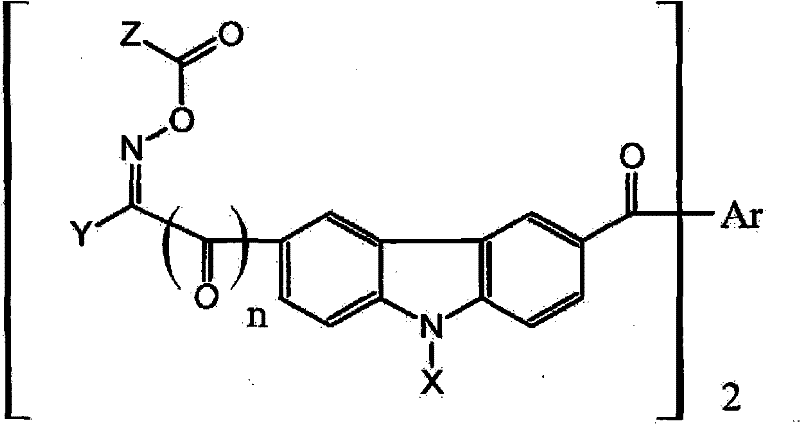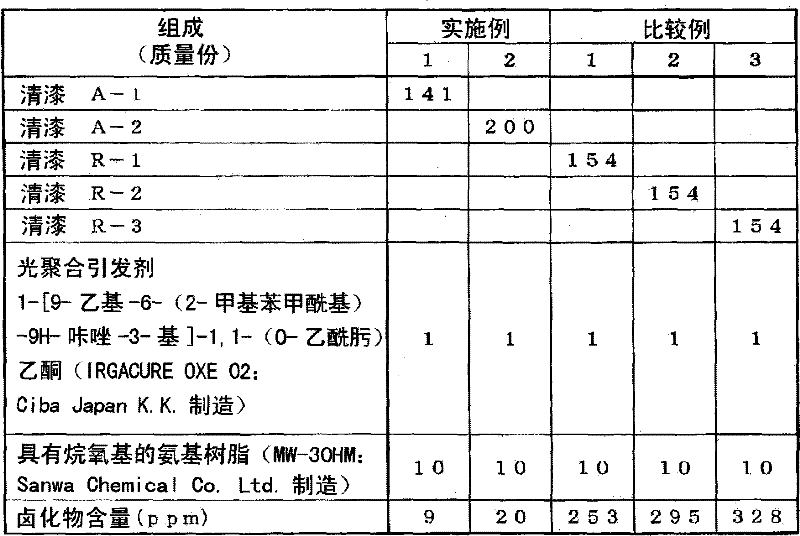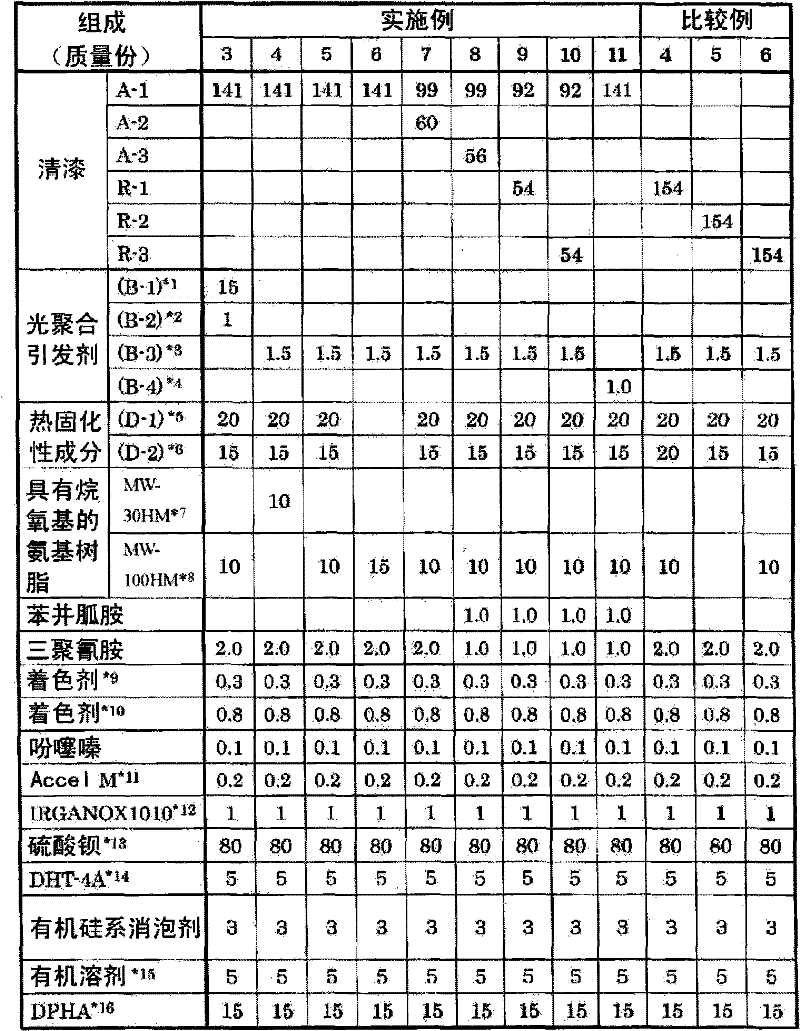Photo-curable and heat-curable resin composition
A resin composition and photocurable technology, which is applied in the field of photocurable thermosetting resin composition, can solve problems such as difficulty in removing impurities, and achieve the effects of improving hydrophobicity, excellent insulation reliability, and improving electrical properties
- Summary
- Abstract
- Description
- Claims
- Application Information
AI Technical Summary
Problems solved by technology
Method used
Image
Examples
Embodiment
[0167] Although Examples and Comparative Examples are shown below and the present invention will be specifically described, the present invention is not limited to the following Examples. In addition, the following "parts" and "%" refer to mass standards unless otherwise specified.
Synthetic example 1
[0169] In an autoclave equipped with a thermometer, a nitrogen gas introduction device, an alkylene oxide introduction device, and a stirring device, 119.4 g of novolac-type cresol resin (manufactured by Showa High Molecular Co., Ltd., trade name "Shonol CRG951", OH equivalent: 119.4), 1.19g of potassium hydroxide and 119.4g of toluene, nitrogen replacement in the system was carried out while stirring, and the temperature was raised by heating. Next, slowly add 63.8g of propylene oxide dropwise, at 125-132°C, at 0-4.8kg / cm 2 React for 16 hours. Then, it was cooled to room temperature, and 1.56 g of 89% phosphoric acid was added and mixed in the reaction solution to neutralize potassium hydroxide to obtain a non-volatile content of 62.1%, a hydroxyl value of 182.2 g / eq. Propane reaction solution. This is a substance in which 1.08 moles of alkylene oxide were added on average per 1 equivalent of phenolic hydroxyl group.
[0170] Next, 293.0 g of the obtained novolak-type cres...
Synthetic example 2
[0172] In a 5-liter detachable flask equipped with a thermometer, a stirrer, and a reflux condenser, 1245 g of polycaprolactone diol (DDAICEL CHEMICAL INDUSTRIES, LTD. manufacture PLACCEL208, molecular weight 830), 201 g of polycaprolactone diol as a polymer polyol, and 201 g as Dimethylol propionic acid which is a dihydroxy compound having a carboxyl group, 777 g of isophorone diisocyanate which is a polyisocyanate, and 119 g of 2-hydroxyethyl acrylate which is a (meth)acrylate having a hydroxyl group, and 0.5 g each of p-methoxyphenol and di-tert-butyl-hydroxytoluene. Heating was stopped at 60° C. while stirring, and 0.8 g of dibutyltin dilaurate was added. If the temperature in the reaction vessel begins to drop, then reheat, continue stirring at 80°C, and confirm the absorption spectrum of the isocyanate group in the infrared absorption spectrum (2280cm -1 ) disappears, the reaction is stopped to obtain a viscous liquid urethane acrylate compound. It adjusted to non-vola...
PUM
| Property | Measurement | Unit |
|---|---|---|
| wavelength | aaaaa | aaaaa |
| acid value | aaaaa | aaaaa |
| acid value | aaaaa | aaaaa |
Abstract
Description
Claims
Application Information
 Login to View More
Login to View More - R&D
- Intellectual Property
- Life Sciences
- Materials
- Tech Scout
- Unparalleled Data Quality
- Higher Quality Content
- 60% Fewer Hallucinations
Browse by: Latest US Patents, China's latest patents, Technical Efficacy Thesaurus, Application Domain, Technology Topic, Popular Technical Reports.
© 2025 PatSnap. All rights reserved.Legal|Privacy policy|Modern Slavery Act Transparency Statement|Sitemap|About US| Contact US: help@patsnap.com



